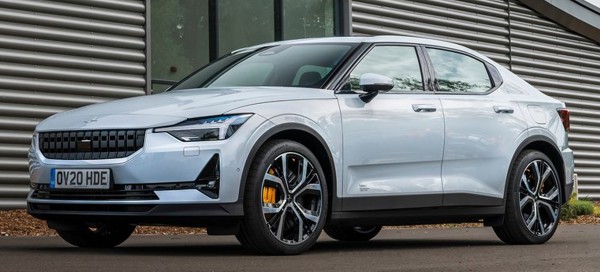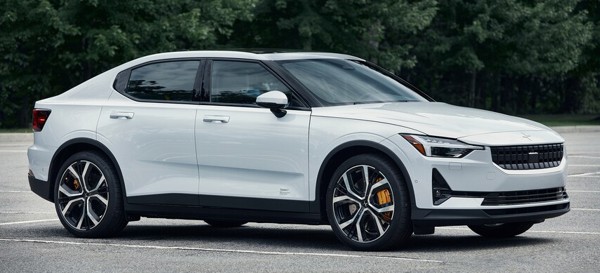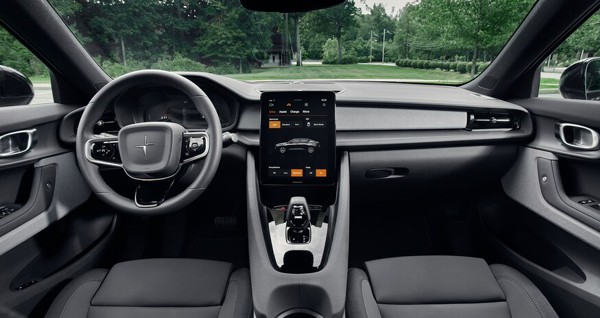Published
on 6
Nov 2020
|
All rights reserved.
|
|
|

|
|
Polestar
aims to win the EV game with "Designed in Sweden, built in China"
business model.
|
|
In just a few years,
Polestar evolved from a motorsport partner of Volvo to its official
tuner and then its performance division, much like the history of AMG.
However, it does not want to stop there. Under the vision of parent
company
Geely, Polestar is assigned a new role: to be the group’s performance
EV brand. Its first dedicated model, the Polestar 1 coupe, tested the
market reception to its new business strategy with initial success.
Although it does not set any new standards on aesthetic, dynamic or
quality fronts, the market seems to like its combination of green
performance, Scandinavian design and easy-going manner. Moreover,
people seem not to mind the fact that it is built in China by a Geely
factory, so the business model of “designed in Sweden, built in China”
is proved to be working.
While all European manufacturers are pushing to introduce electric
cars, Volvo was the earliest to put plug-in hybrid cars into mass
production. The Polestar 1 is a plug-in hybrid, but it is set to be
also the only Polestar models incorporating an engine. From Polestar 2,
all the brand’s vehicles will be pure EVs. You cannot help admiring the
courage and determination of Volvo’s management, as it lacks the huge
R&D resources of Daimler, BMW or VW group. It also lacks the
volume of the German giants, so the key to its success will be to make
every
decision smartly. The “designed in Sweden, built in China” model is
certainly important to bring down costs and speed up production.
Equally important is to build the Polestar 2 on the group’s CMA
(Compart Module Architecture) platform, so that it could share costs
with volume models like Volvo XC40, Lynk&Co 01 and 02. This lifts
economy of scale significantly.

|
|
For
a Scandinavian design, it is not tasteful enough.
|
|
The Scandinavian design part should be promising. However, we are a
little disappointed this time. The Polestar 2 doesn’t look ordinary,
but it is not quite as tasteful as expected. There is some Saab 900
kind of oddness in its proportion, and the blackened A-pillars are akin
to the last Saab 9-5, but the boxy shape has lost the beauty and
elegance of Polestar 1. The crossover coupe proportion is not easy to
like, because its combination of small glasshouse, high shoulders and
high ground clearance delivers an impression of heavy, rugged and
inefficient, working against the green image an EV should promote.
Compare it with a Tesla Model 3 and you will see a stark contrast: the
Tesla looks low, light and glassy. It is impossibly sleek with a
grilleless nose and a very smooth body. The Volvo has a Cd of 0.28, but
the Tesla beats it handsomely at 0.23, and its smaller frontal area
results in even less drag.
That crossover coupe shape also hurts the interior. The high waist
line and small windows result in a claustrophobic ambience, something
unheard of at Volvo. Rear quarter visibility is especially poor, blame
to the thick sloping C-pillars. Rearward view is also hampered by a
shallow hatch glass. I always reckon crossover coupe is the worst
proportion a car can get.
You sit higher in the cabin of Polestar 2 than in a Tesla, but not as
high as an XC40. Volvo's seats are comfortable. Space in front is fine,
less so at the rear, as
legroom is a little tight and headroom is not generous. Moreover, a
high transmission tunnel – necessary to store batteries – makes it
effectively a 4-seater. The same goes for boot space – about the same
as a Golf, although there is another 35-liter boot up front.

|
|
Claustrophobic
cabin is well built and feels sophisticated.
|
|
However, starting from there, the Polestar 2 is mostly good. The
cabin’s materials and build quality are much more premium than Model 3.
The presence of a digital instrument cluster is more intuitive than the
single center touchscreen on Tesla. While the 11.5-inch portrait
touchscreen here is not quite as large as the 15-inch item on Tesla,
its graphics are pleasing, response is quick and the software operation
is sleek and easy to use. It is the first production car to run Google
OS, and the integration with Google Assistant provides a mostly
accurate voice recognition. This is one of the best infotainment
systems on the market.
As for performance, it falls behind Tesla, but not by too much. No
one can beat Tesla for power and efficiency because it builds its
own batteries and incorporates all of them neatly under the thin
floorpan. The CMA platform of Polestar is not a dedicated EV platform,
so it is not optimized for battery placement. Some batteries are stored
under the front and rear seats, and some inside the transmission
tunnel. At most it can store 78kWh of batteries, which is the case of
the launch edition. Cheaper models with less battery capacity will
follow.
The same goes for power. The launch model comes with 2 identical
motors,
one at each axle, to provide a combined 408 horsepower and 487
pound-foot of torque and 4-wheel-drive capability. Lesser models will
come with single motor and rear-drive. There is no limited
slip differential at both axles, as it uses brakes to tame wheel spin.
While
the power figures are impressive, they are not quite as impressive as
the
Model 3 Performance (450 hp and 471 lbft). Moreover, the CMA platform
means the Polestar carries 200 more kilograms, tipping the scale at
over 2 tons. It is capable to do 0-60 sprint in 4.5 seconds, identical
to Jaguar I-Pace but no match for the eye-popping 3.5 seconds of Tesla.
Top speed is limited to 127 mph – note that
Volvo uses Polestar brand to break its promise for limiting all its
cars to 112 mph. WLTP range is 292 miles or 470 km, sufficient for most
drivers, but again trailing Tesla's 352 miles or 567 km.

|
|
Öhlins
dampers offer decent control, but ride is unnecessarily harsch.
|
|
4.5 seconds to 60 mph is still impressive enough, and it feels even
quicker at the bottom end thanks to that instant surge of electric
torque. However, this is a common characteristic of all electric cars,
as is the near silence of low-speed running. If you like EVs, you will
like the Polestar 2. If you love to hear exhaust noise and enjoy
getting performance through wringing out the engine, you will never
like the idea of EV.
The Polestar 2 rides on struts suspension up front and a multilink rear
axle, as in all CMA cars. Conventional coil springs and dampers are
employed. Disappointingly, there is no adaptive dampers option.
Instead, if you opt for the £5000 Performance pack (which lifts
the list price up to £52,000), you will get Öhlins DFV
dampers like the late S60 and V70 Polestar, as well as 20-inch wheels
and larger Brembo brakes. These motorsport-oriented dampers are
adjustable for compression and rebound, but only manually when you jack
up the car, so most drivers will leave them unaltered after finding a
suitable setting. When you start pushing the car on a challenging road,
the DFV dampers do provide better body control, but the flipside is a
stiff ride at normal driving speeds, even with the dampers set to the
softest. Cars without the performance pack
trade some body control with a softer ride. However, no matter which
versions, the Polestar 2 still rides too hard, blame to the need to
contain its extra weight.
Still, compared with the Silicone Valley work of Model 3, Polestar
shows superior skills in tuning its chassis. Its grip, its roll control
and its steering are all more linear and predictable. Drive it harder
through a challenging road, it is easier to get into rhythm. No, it is
not perfect. The steering lacks feel, and the brake pedal’s initial
response is soft. A BMW M340i xDrive, at just under £50,000, is a
far more polished and engaging car, also quicker in a straight line,
quicker in corners, roomier and feels a tad more premium. The Swedish
might have built an EV comparable with Tesla, but still not good enough
to
replace conventional premium cars yet. To do so, it needs a more
tasteful design, a roomier cabin and a more refined ride. As a niche
model selling on green image, however, it has its own attraction. Just
don't think it a European Tesla, because it does not innovate anything.
|
Verdict:    |
|